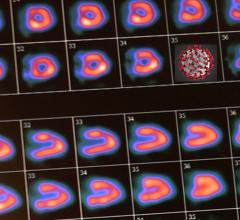
June 29, 2015 - The Global Nuclear Medicine Diagnostics Market report from Mordor Intelligence revealed that North America accounts for the highest share of the global nuclear medicine diagnostic market, followed by Europe and Asia-Pacific. Asian countries are expected to show a growing trend in the diagnostic sector because of increasing diagnostic procedure demand and the rise of the medical device industry.
The market is segmented into two major segments: single photon emission computed tomography (SPECT), which includes technetium-99m (TC-99m), thallium-201 (TL-201), iodine (I-123) and others; and positron emission tomography (PET), including fluorine-18, rubidium-82 (RB-82) and others. By application the market is segmented into SPECT (cardiology, lymphoma, thyroid, neurology and others) and PET (oncology, cardiology, neurology and others). By geography the market is segmented into North America, Europe and Asia-Pacific etc.
The global nuclear medicine diagnostic (PET and SPECT) market is expected to grow from an estimated $ 8.77 billion in 2014 to $15.51 billion in 2019, at an estimated compound annual growth rate (CAGR) of 12.08 percent.
Major factors for the growth of the market are increasing use of SPECT and PET in medical diagnostics, increased awareness about radiopharmaceuticals and ready availability of radiopharmaceuticals. It has novel applications for diseases such as Alzheimer's and a continually expanding oncology segment. However, some of the major constraints for the market are shorter half- life of radioisotopes, high capital investment, regulatory guidelines and reimbursement issues.
Until now, SPECT imaging was the mainstream modality for nuclear medicine applications like nuclear cardiology procedures. However, the trend is soon going to flip upside down because of a global shortage of molybdenum-99 isotope, which in turn will lead to a shortage of technetium-99, the daughter product of molybdenum. Hence, PET imaging products, which includes hybrid PET-CT scanners, holds a potential increase in market size in coming years. The cost associated with PET-CT service contracts is usually 105 percent of the system purchase price annually and can be as high as $275,000 per year.
The emerging market trend is fusion of nuclear imaging with different diagnostic imaging products such as PET/CT, SPECT/CT, and MRI/PET (magnetic resonance imaging). This provides a full gamut of imaging scans through the same unit and at the same time. The PET market is expected to witness more growth compared to SPECT imaging, as it provides higher resolution images, and the lack of availability of technetium-99m is propelling the industry to look for alternative diagnostic procedures.
Analyzing the application segment of SPECT and PET, PET is majorly being used in oncology because of good quality of imaging. SPECT, however, is mostly being used in the cardiology segment, accounting for almost 90 percent of the market share in cardiology. North America has totaled 5,729 PET procedures, while the number of PET procedures in the Asia-Pacific region is 369,636, owing to the increased demand of nuclear medicine diagnostic procedures in developing nations.
Major players in the market include Cardiarc Ltd., Digirad Corp., Gamma Medica Inc., GE Healthcare and Hologic Inc. Mergers and acquisitions of small and medium-sized manufacturers is another strategy being adopted by multinational players to enter in overseas markets.
For more information: www.mordorintelligence.com


 August 03, 2023
August 03, 2023 








